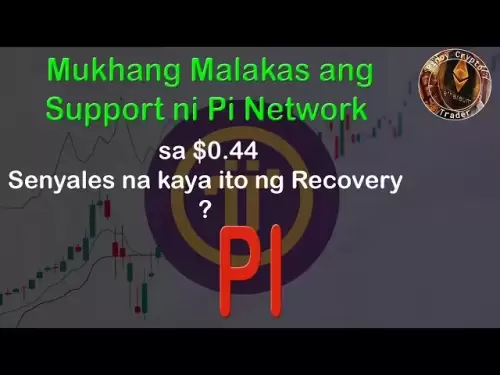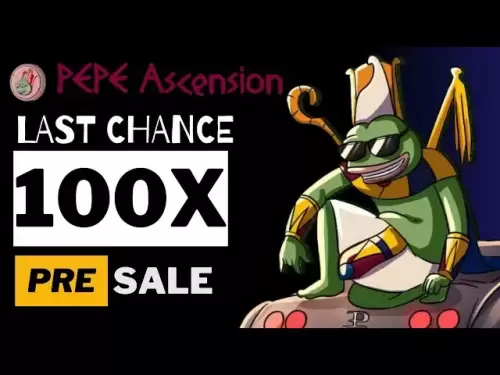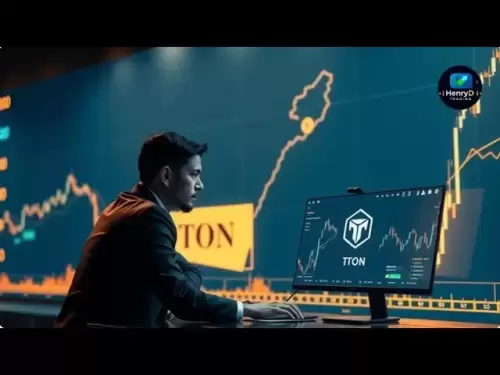-
 Bitcoin
Bitcoin $108,894.1122
0.78% -
 Ethereum
Ethereum $2,576.7002
2.37% -
 Tether USDt
Tether USDt $1.0000
-0.02% -
 XRP
XRP $2.2743
0.90% -
 BNB
BNB $662.6529
1.20% -
 Solana
Solana $152.3741
3.18% -
 USDC
USDC $1.0000
0.01% -
 TRON
TRON $0.2865
0.68% -
 Dogecoin
Dogecoin $0.1718
4.83% -
 Cardano
Cardano $0.5873
2.01% -
 Hyperliquid
Hyperliquid $39.7211
2.09% -
 Sui
Sui $2.9080
0.43% -
 Bitcoin Cash
Bitcoin Cash $495.0930
2.00% -
 Chainlink
Chainlink $13.6045
3.29% -
 UNUS SED LEO
UNUS SED LEO $9.0692
0.54% -
 Avalanche
Avalanche $18.2226
2.15% -
 Stellar
Stellar $0.2486
3.70% -
 Shiba Inu
Shiba Inu $0.0...01176
1.99% -
 Toncoin
Toncoin $2.7908
-7.52% -
 Hedera
Hedera $0.1594
3.69% -
 Litecoin
Litecoin $87.8847
1.25% -
 Monero
Monero $318.2718
0.86% -
 Polkadot
Polkadot $3.3962
1.17% -
 Dai
Dai $0.9999
-0.01% -
 Ethena USDe
Ethena USDe $0.9999
-0.02% -
 Bitget Token
Bitget Token $4.4102
0.34% -
 Uniswap
Uniswap $7.3795
1.39% -
 Aave
Aave $286.7121
5.74% -
 Pepe
Pepe $0.0...01007
3.39% -
 Pi
Pi $0.4602
2.28%
What is the most likely market situation after UNI Bollinger Bands close?
When Bollinger Bands close for UNI, traders should watch for breakouts, mean reversion, or increased volatility, using volume and sentiment as key indicators.
Apr 25, 2025 at 10:35 am
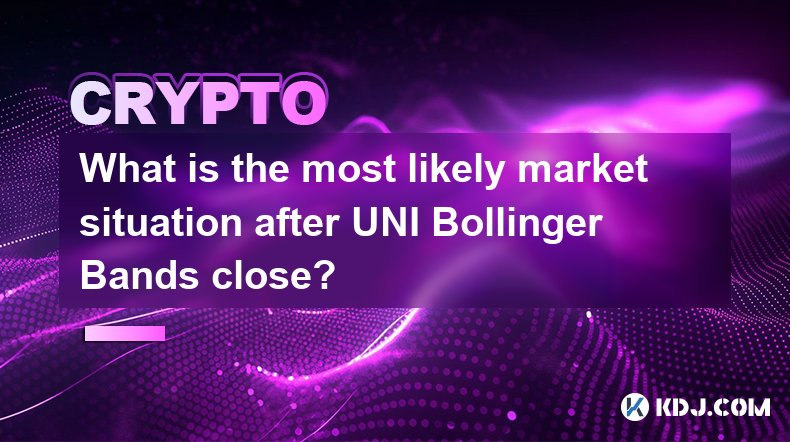
The Bollinger Bands are a popular technical analysis tool used by traders to gauge market volatility and potential price movements. When applied to the cryptocurrency UNI (Uniswap's governance token), the closing of Bollinger Bands can provide insights into the most likely market situation that follows. Let's explore this in detail.
Understanding Bollinger Bands
Bollinger Bands consist of three lines: a middle band which is a simple moving average (SMA), and an upper and lower band which are standard deviations away from the SMA. The standard setting is usually a 20-day SMA with the upper and lower bands set at two standard deviations from the SMA. These bands expand and contract based on market volatility.
What Happens When Bollinger Bands Close?
When the Bollinger Bands close, it typically means that the upper and lower bands are moving closer together. This narrowing of the bands indicates a period of low volatility in the market. In the context of UNI, this can suggest that the market is consolidating and that a significant price move might be imminent.
Market Situation After Bollinger Bands Close
After the Bollinger Bands close, there are a few possible market situations that could follow for UNI:
- Breakout: A common scenario is a breakout, where the price of UNI breaks above the upper band or below the lower band. This breakout can signal the start of a new trend, either bullish or bearish.
- Reversion to the Mean: Another possibility is that the price of UNI might revert to the mean, or the middle band, before continuing its previous trend. This can happen if the market remains in a state of low volatility.
- Increased Volatility: The closing of the bands can also be a precursor to increased volatility. Traders often watch for this as it can signal upcoming price movements.
Factors Influencing the Market Situation
Several factors can influence the market situation after the Bollinger Bands close for UNI:
- Market Sentiment: The overall sentiment in the cryptocurrency market can greatly affect how UNI reacts after the bands close. Positive sentiment can lead to a bullish breakout, while negative sentiment might result in a bearish one.
- Volume: Trading volume is another crucial factor. A breakout accompanied by high volume is more likely to be sustainable than one with low volume.
- External Events: News and events related to Uniswap or the broader cryptocurrency market can also impact the market situation. For example, announcements about Uniswap's development or regulatory news can cause significant price movements.
How to Trade UNI After Bollinger Bands Close
Traders often use the closing of Bollinger Bands as a signal to prepare for potential trades. Here's how you might approach trading UNI after the bands close:
- Monitor for Breakouts: Keep an eye on the price of UNI for any breakouts above the upper band or below the lower band. A breakout with high volume is a strong signal to consider entering a trade.
- Set Entry Points: If you anticipate a bullish breakout, consider setting an entry point just above the upper band. For a bearish breakout, set an entry point just below the lower band.
- Use Stop-Loss Orders: Always use stop-loss orders to manage risk. Place a stop-loss just below the breakout level for a bullish trade, or just above the breakout level for a bearish trade.
- Watch for Reversion to the Mean: If the price seems to be reverting to the mean, you might consider trading the range. Buy near the lower band and sell near the upper band.
- Identify Support and Resistance: Use the lower band as a potential support level and the upper band as a potential resistance level.
- Trade the Range: Enter long positions near the lower band and short positions near the upper band, always using stop-loss orders to manage risk.
- Prepare for Increased Volatility: Be ready for increased volatility by adjusting your trading strategy accordingly.
- Adjust Position Sizes: Consider reducing your position sizes to manage risk during periods of high volatility.
- Use Technical Indicators: Combine Bollinger Bands with other technical indicators like the Relative Strength Index (RSI) or Moving Average Convergence Divergence (MACD) to confirm signals.
Examples of UNI Market Situations After Bollinger Bands Close
To illustrate how the market situation might unfold after Bollinger Bands close for UNI, let's look at some hypothetical scenarios:
- Scenario 1: Bullish Breakout: The Bollinger Bands for UNI have been narrowing for several days, indicating low volatility. Suddenly, positive news about Uniswap's upcoming features causes the price to break above the upper band with high volume. Traders who were monitoring for this breakout enter long positions, and the price of UNI continues to rise.
- Scenario 2: Bearish Breakout: The Bollinger Bands for UNI have been closing, and the market sentiment has been negative due to regulatory concerns. The price of UNI breaks below the lower band with significant volume, signaling a bearish trend. Traders who anticipated this move enter short positions, and the price of UNI continues to decline.
- Scenario 3: Reversion to the Mean: After the Bollinger Bands for UNI close, the price starts to oscillate between the upper and lower bands. Traders who recognize this pattern buy near the lower band and sell near the upper band, profiting from the range-bound movement.
Frequently Asked Questions
Q1: Can Bollinger Bands be used as the sole indicator for trading UNI?
A1: While Bollinger Bands are a powerful tool, they are best used in conjunction with other indicators and analysis methods. Relying solely on Bollinger Bands may lead to false signals, especially in the volatile cryptocurrency market. Combining Bollinger Bands with indicators like RSI or MACD can provide more robust trading signals.
Q2: How often do Bollinger Bands close for UNI?
A2: The frequency of Bollinger Bands closing for UNI can vary based on market conditions. During periods of high volatility, the bands may close less frequently, while during periods of low volatility, they may close more often. Traders should monitor the bands regularly to identify these occurrences.
Q3: Are there specific time frames that work best for Bollinger Bands on UNI?
A3: The effectiveness of Bollinger Bands can vary depending on the time frame used. Shorter time frames like 15-minute or 1-hour charts may be more suitable for day traders, while longer time frames like daily or weekly charts may be better for swing traders. It's important to choose a time frame that aligns with your trading strategy and goals.
Q4: How can I identify false breakouts after Bollinger Bands close for UNI?
A4: False breakouts can be identified by looking at several factors. If a breakout occurs with low volume, it may be a false signal. Additionally, if the price quickly reverses back within the bands after a breakout, it could indicate a false breakout. Using additional technical indicators and watching for confirmation can help distinguish between true and false breakouts.
Disclaimer:info@kdj.com
The information provided is not trading advice. kdj.com does not assume any responsibility for any investments made based on the information provided in this article. Cryptocurrencies are highly volatile and it is highly recommended that you invest with caution after thorough research!
If you believe that the content used on this website infringes your copyright, please contact us immediately (info@kdj.com) and we will delete it promptly.
- Babylon, Bitcoin, and the EVM Mainnet: A New Era for BTCFi?
- 2025-07-07 16:30:11
- Queen Elizabeth Coin Sells for £31,000: A Royal Fortune in Your Pocket?
- 2025-07-07 16:30:11
- XRP Price Check: Will Resistance Trigger a July Drop?
- 2025-07-07 17:10:12
- UAE, Toncoin, and Golden Visas: Separating Fact from Crypto Fiction
- 2025-07-07 16:50:12
- Toncoin, UAE, and the Golden Visa Mirage: What Really Happened?
- 2025-07-07 17:10:12
- Toncoin's UAE Visa Saga: Hype, Hope, and the Inevitable Pullback
- 2025-07-07 17:15:11
Related knowledge
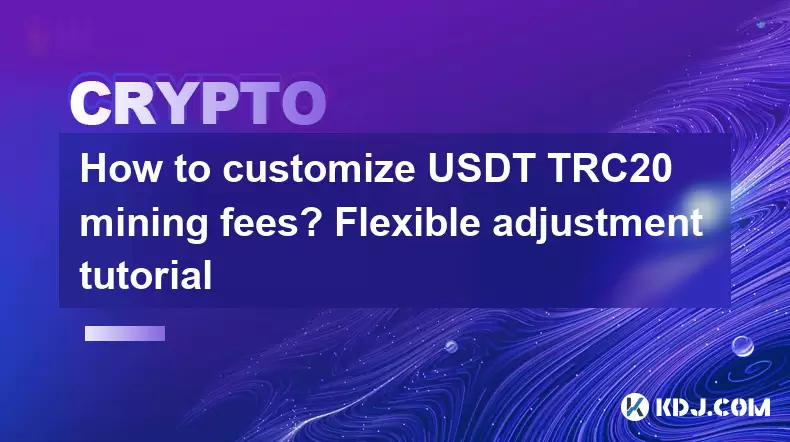
How to customize USDT TRC20 mining fees? Flexible adjustment tutorial
Jun 13,2025 at 01:42am
Understanding USDT TRC20 Mining FeesMining fees on the TRON (TRC20) network are essential for processing transactions. Unlike Bitcoin or Ethereum, where miners directly validate transactions, TRON uses a delegated proof-of-stake (DPoS) mechanism. However, users still need to pay bandwidth and energy fees, which are collectively referred to as 'mining fe...
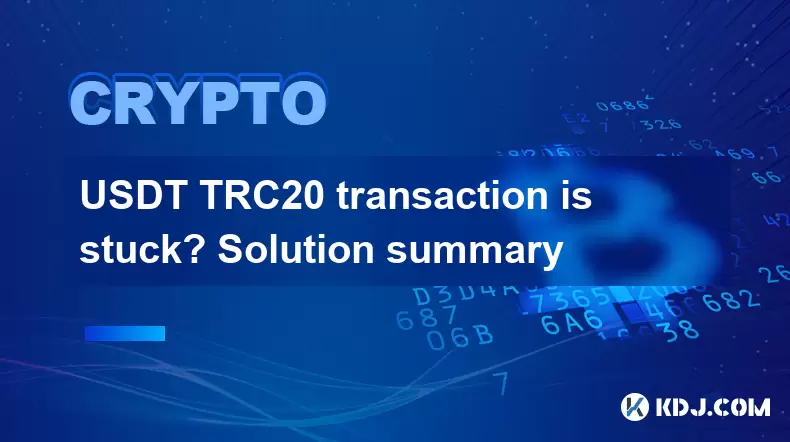
USDT TRC20 transaction is stuck? Solution summary
Jun 14,2025 at 11:15pm
Understanding USDT TRC20 TransactionsWhen users mention that a USDT TRC20 transaction is stuck, they typically refer to a situation where the transfer of Tether (USDT) on the TRON blockchain has not been confirmed for an extended period. This issue may arise due to various reasons such as network congestion, insufficient transaction fees, or wallet-rela...
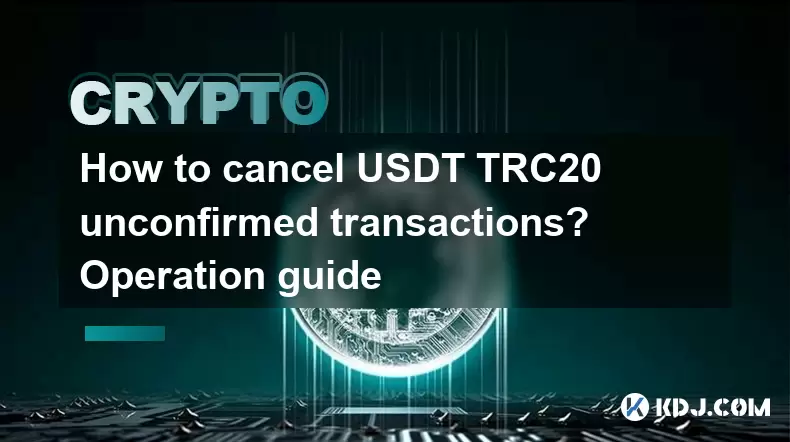
How to cancel USDT TRC20 unconfirmed transactions? Operation guide
Jun 13,2025 at 11:01pm
Understanding USDT TRC20 Unconfirmed TransactionsWhen dealing with USDT TRC20 transactions, it’s crucial to understand what an unconfirmed transaction means. An unconfirmed transaction is one that has been broadcasted to the blockchain network but hasn’t yet been included in a block. This typically occurs due to low transaction fees or network congestio...
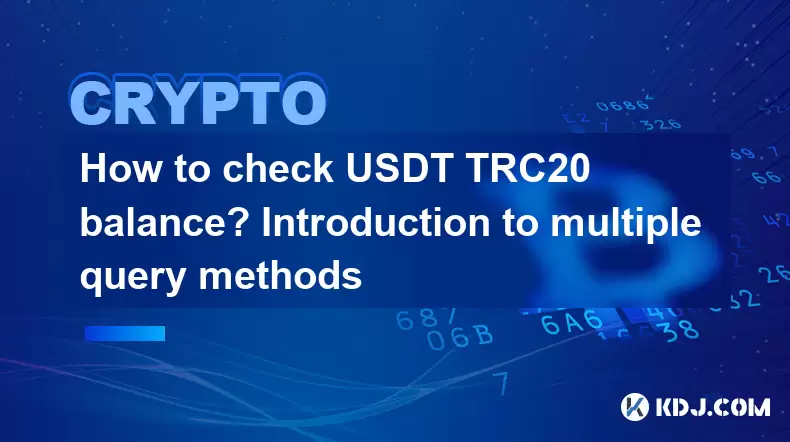
How to check USDT TRC20 balance? Introduction to multiple query methods
Jun 21,2025 at 02:42am
Understanding USDT TRC20 and Its ImportanceUSDT (Tether) is one of the most widely used stablecoins in the cryptocurrency market. It exists on multiple blockchain networks, including TRC20, which operates on the Tron (TRX) network. Checking your USDT TRC20 balance accurately is crucial for users who hold or transact with this asset. Whether you're sendi...
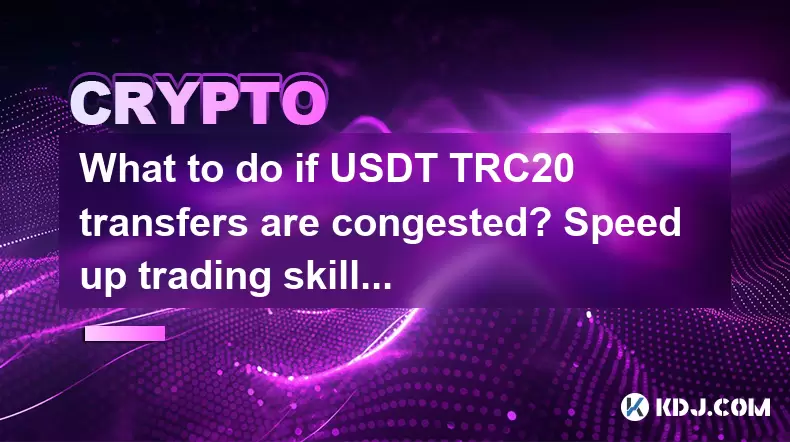
What to do if USDT TRC20 transfers are congested? Speed up trading skills
Jun 13,2025 at 09:56am
Understanding USDT TRC20 Transfer CongestionWhen transferring USDT TRC20, users may occasionally experience delays or congestion. This typically occurs due to network overload on the TRON blockchain, which hosts the TRC20 version of Tether. Unlike the ERC20 variant (which runs on Ethereum), TRC20 transactions are generally faster and cheaper, but during...
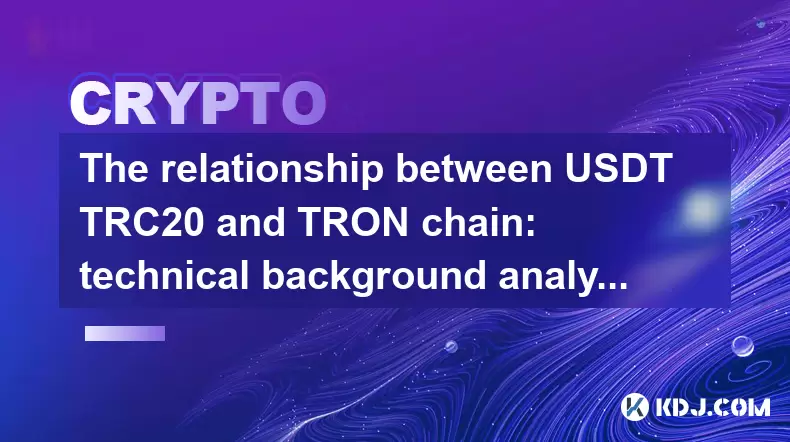
The relationship between USDT TRC20 and TRON chain: technical background analysis
Jun 12,2025 at 01:28pm
What is USDT TRC20?USDT TRC20 refers to the Tether (USDT) token issued on the TRON blockchain using the TRC-20 standard. Unlike the more commonly known ERC-20 version of USDT (which runs on Ethereum), the TRC-20 variant leverages the TRON network's infrastructure for faster and cheaper transactions. The emergence of this version came as part of Tether’s...

How to customize USDT TRC20 mining fees? Flexible adjustment tutorial
Jun 13,2025 at 01:42am
Understanding USDT TRC20 Mining FeesMining fees on the TRON (TRC20) network are essential for processing transactions. Unlike Bitcoin or Ethereum, where miners directly validate transactions, TRON uses a delegated proof-of-stake (DPoS) mechanism. However, users still need to pay bandwidth and energy fees, which are collectively referred to as 'mining fe...

USDT TRC20 transaction is stuck? Solution summary
Jun 14,2025 at 11:15pm
Understanding USDT TRC20 TransactionsWhen users mention that a USDT TRC20 transaction is stuck, they typically refer to a situation where the transfer of Tether (USDT) on the TRON blockchain has not been confirmed for an extended period. This issue may arise due to various reasons such as network congestion, insufficient transaction fees, or wallet-rela...

How to cancel USDT TRC20 unconfirmed transactions? Operation guide
Jun 13,2025 at 11:01pm
Understanding USDT TRC20 Unconfirmed TransactionsWhen dealing with USDT TRC20 transactions, it’s crucial to understand what an unconfirmed transaction means. An unconfirmed transaction is one that has been broadcasted to the blockchain network but hasn’t yet been included in a block. This typically occurs due to low transaction fees or network congestio...

How to check USDT TRC20 balance? Introduction to multiple query methods
Jun 21,2025 at 02:42am
Understanding USDT TRC20 and Its ImportanceUSDT (Tether) is one of the most widely used stablecoins in the cryptocurrency market. It exists on multiple blockchain networks, including TRC20, which operates on the Tron (TRX) network. Checking your USDT TRC20 balance accurately is crucial for users who hold or transact with this asset. Whether you're sendi...

What to do if USDT TRC20 transfers are congested? Speed up trading skills
Jun 13,2025 at 09:56am
Understanding USDT TRC20 Transfer CongestionWhen transferring USDT TRC20, users may occasionally experience delays or congestion. This typically occurs due to network overload on the TRON blockchain, which hosts the TRC20 version of Tether. Unlike the ERC20 variant (which runs on Ethereum), TRC20 transactions are generally faster and cheaper, but during...

The relationship between USDT TRC20 and TRON chain: technical background analysis
Jun 12,2025 at 01:28pm
What is USDT TRC20?USDT TRC20 refers to the Tether (USDT) token issued on the TRON blockchain using the TRC-20 standard. Unlike the more commonly known ERC-20 version of USDT (which runs on Ethereum), the TRC-20 variant leverages the TRON network's infrastructure for faster and cheaper transactions. The emergence of this version came as part of Tether’s...
See all articles























